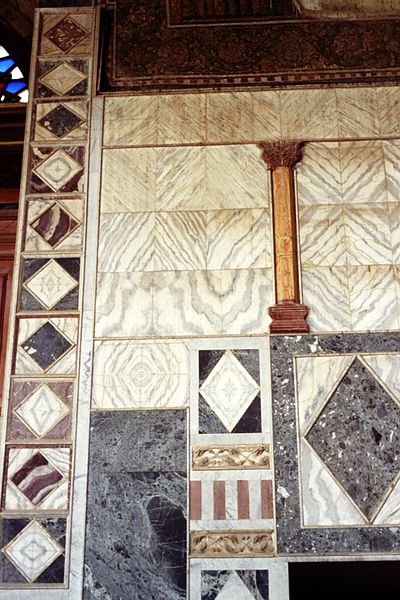The Umayyad Mosque, also known as the Great Mosque of Damascus, located in the old city of Damascus, the capital of Syria, is one of the largest and oldest mosques in the world. Its religious importance stems from the eschatological reports concerning the mosque, and historic events associated with it. Christian and Muslim tradition alike consider it the burial place of John the Baptist's head, a tradition originating in the 6th century. Two shrines inside the premises commemorate the Islamic prophet Muhammad's grandson Husayn ibn Ali, whose martyrdom is frequently compared to that of John the Baptist and Jesus.
Umayyad Mosque
Remains of an old Roman-era triple doorway in the exterior southern wall of the mosque
Remnants of original marble paneling around the inside of Bab Jairun, the east gate of the mosque
Western portico of the courtyard, with partial remains of mosaic decoration
Damascus is the capital and largest city of Syria, the oldest current capital in the world and, according to some, the fourth holiest city in Islam. Known colloquially in Syria as aš-Šām (الشَّام) and dubbed, poetically, the "City of Jasmine", Damascus is a major cultural center of the Levant and the Arab world.
Umayyad Mosque General view of Damascus • Mount Qasioun Maktab Anbar • Azm Palace Sulaymaniyya Takiyya
Damascus in spring seen from Spot satellite
Mount Qasioun overlooking the city
One of the rare periods the Barada river is high, seen here next to the Four Seasons hotel in downtown Damascus








